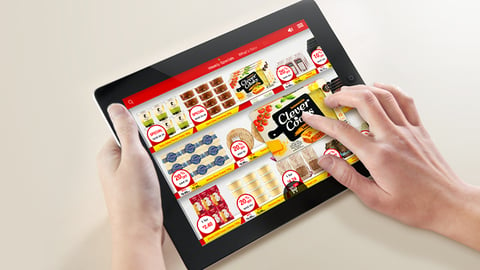The Auto-Replenishment Grocery Era is Here
The COVID-19 pandemic is accelerating consumer adoption of grocery auto-replenishment.
According to Acosta's latest study of shifting consumer shopping habits, consumers are turning to grocery replenishment programs online as a way to circumvent out-of-stocks at stores and even online via services such as Instacart or proprietary retailer websites. This is also a way for shoppers to avoid having to go into physical stores.
The Acosta research shows that 38% of shoppers have placed an online grocery subscription order in the past four weeks. The most popular categories purchased by this method include health and beauty (19% of online subscriptions contained health and beauty products), shelf stable food and beverages (18%) and paper and cleaning products (18%). Many of these shoppers made their first-ever online subscription orders. Of shoppers who ordered fresh food and beverages via online subscription, 55% ordered for the first time. Of shoppers who ordered meal kits via online subscription, 47% ordered for the first time. Of shoppers who ordered alcohol via online subscription, 46% ordered for the first time.
"E-commerce has grown at an accelerated rate — by two or three years — and a new trend we are seeing is shoppers turning to online subscription services, many for the first time," said Darian Pickett, CEO of Jacksonville, Fla.-based Acosta. "This serves as a way to work around out-of-stocks they've experienced while also allowing consumers to stay out of physical stores. Health and beauty and alcohol are unsurprisingly popular subscription categories, since in many states, these stores have not yet reopened."
Acosta's fourth COVID-19 research report provides other insights into current consumer concern and behaviors, as well as predictions for the CPG industry as it emerges from this global crisis, including:
- During the April 17-23 time period, 61% of shoppers reported that more than half of their products were available, up 6% from the April 4-7 time period.
- Forty-three percent of shoppers found acceptable substitutes for at least half of their out-of-stock items.
- Store brands are proving to be a good alternative for shoppers, with 40% of shoppers buying more store brands since the outbreak.
- Of those shoppers, 57% are doing so to substitute for their usual brand, and 35% are doing so to save money.
- Fifty-six percent of Millennials and 29% of boomers are buying more store brands.
- Sixty-three percent of shoppers said that they'll stick with purchasing at least some store brands post-pandemic.
As to how to navigate the transition into the next phase of the pandemic, Acosta issued the following recommendations:
- Retailers need to adapt to accelerated e-commerce growth as consumers turn to online shopping at a much faster rate due to COVID-19. There's opportunity for retailers to invest in click-and-collect and curbside pickup capabilities.
- Shoppers will continue to exercise caution with nonessential spending and will increasingly look for deals, which will lead to trading down and the purchase of more store brands. Retailers and brands should re-plan promotions that were put on hold.
- Retailers need to work on shelf and assortment recovery. Those with access to real-time data are best positioned to combat inventory issues.
- The supply chain should be a major focus area for retailers and brands as they try to balance in-store versus online sales.
To access the full report, click here.






